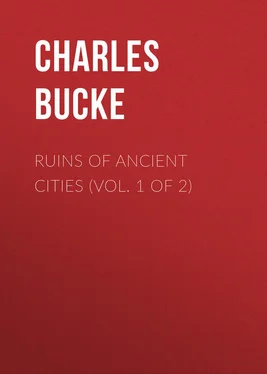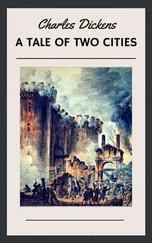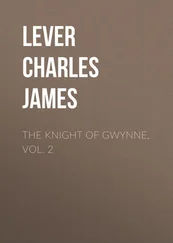Charles Bucke - Ruins of Ancient Cities (Vol. 1 of 2)
Здесь есть возможность читать онлайн «Charles Bucke - Ruins of Ancient Cities (Vol. 1 of 2)» — ознакомительный отрывок электронной книги совершенно бесплатно, а после прочтения отрывка купить полную версию. В некоторых случаях можно слушать аудио, скачать через торрент в формате fb2 и присутствует краткое содержание. Жанр: foreign_antique, foreign_prose, на английском языке. Описание произведения, (предисловие) а так же отзывы посетителей доступны на портале библиотеки ЛибКат.
- Название:Ruins of Ancient Cities (Vol. 1 of 2)
- Автор:
- Жанр:
- Год:неизвестен
- ISBN:нет данных
- Рейтинг книги:4 / 5. Голосов: 1
-
Избранное:Добавить в избранное
- Отзывы:
-
Ваша оценка:
- 80
- 1
- 2
- 3
- 4
- 5
Ruins of Ancient Cities (Vol. 1 of 2): краткое содержание, описание и аннотация
Предлагаем к чтению аннотацию, описание, краткое содержание или предисловие (зависит от того, что написал сам автор книги «Ruins of Ancient Cities (Vol. 1 of 2)»). Если вы не нашли необходимую информацию о книге — напишите в комментариях, мы постараемся отыскать её.
Ruins of Ancient Cities (Vol. 1 of 2) — читать онлайн ознакомительный отрывок
Ниже представлен текст книги, разбитый по страницам. Система сохранения места последней прочитанной страницы, позволяет с удобством читать онлайн бесплатно книгу «Ruins of Ancient Cities (Vol. 1 of 2)», без необходимости каждый раз заново искать на чём Вы остановились. Поставьте закладку, и сможете в любой момент перейти на страницу, на которой закончили чтение.
Интервал:
Закладка:
The Academy was so called from Academus. The Cynosarges was a place in the suburbs, not far from the Lyceum.
The Areopagus is situated a few hundred feet west of the Acropolis. It consists of an insulated rock, precipitous, and broken towards the south; on the north side it slopes gently down towards the temple of Theseus, and is rather lower than the Acropolis. "Higher up, ascending a hill covered with thistles and red pebbles, you arrive," says M. La Martine, "at the Pnyx; the scene of the stormy assemblies of the people of Athens, and of the fluctuating triumphs of its orators or its favourites; enormous masses of black stone, some of which measure twelve or thirteen cubic feet, lie upon one another, and support the terrace, upon which the people collected. Still higher up, at the distance of about fifty paces, we perceive a huge square block, wherein steps have been cut, which probably served for the orator to mount his tribunal, which thus overlooked the people, the city, and the sea. This possesses not the character of the people of Pericles, but seems Roman. The recollections it inspires are, however, delightful. Demosthenes spoke from thence, and roused or calmed that popular sea, more stormy than the Ægean, which he could also hear roll behind him."
"From the odeum of Regilla," says Dr. Clarke, "we went to the Areopagus, wishing to place our feet upon a spot where it is so decidedly known that St. Paul had himself stood; and to view with our own eyes the same scene which he beheld, when he declared unto the Athenians the nature of the unknown god, whom they so ignorantly worshipped. * * * We ascended to the top by means of steps cut within the natural stone, which is of breccia. The sublime scene here exhibited is so striking, that a brief description of it may prove how truly it offers to us a commentary upon St. Paul's words, as they were delivered upon the spot. Before him there was spread a glorious prospect of mountains, islands, seas, and skies; behind him towered the lofty Acropolis, crowned with all its marble temples. This very object, whether in the face of nature, or among the works of art, conspired to elevate the mind, and to fill it with reverence towards that Being, 'who made and governs the world;' who sitteth in that light which no mortal eye can approach, and yet is nigh unto the meanest of his creatures; 'in whom we live, and move, and have our being.'"
Near the Piræan gate is still to be seen, in a state of admirable preservation, the ground-plot and entire town of the Pnyx, or place of parliament of the Athenians, as it was appropriated by Solon to the use of the citizens. Nearly the whole of it is an excavation of the rock, and the several parts of it were carved in stone of one solid mass, with the exception only of the semi-circular area, the farthest part of which consists of masonry. "To approach the spot," says Dr. Clarke, "once dignified by the presence of the greatest Grecian orators, to set our feet where they stood, and actually to behold the place where Demosthenes addressed 'the men of Athens,' calling to mind the most memorable examples of his eloquence, is a gratification of an exalted nature. But the feelings excited in viewing the Pnyx, peculiarly affect Englishmen: that holy fire, so much dreaded by the Athenian tyrants, and which this place had such a remarkable tendency to agitate, burns yet in Britain; it is the very soul of her liberties, and it strengthens the security of her laws; giving eloquence to her senate, heroism to her armies, extension to her commerce, and freedom to her people: although annihilated in almost every country of the earth, it lives in England, and its extinction there, like the going out of the sacred flame in the temple of Delphi, would be felt as a national calamity."
Among the loose fragments, dispersed in the Acropolis, has been found a small piece of marble, with an inscription, but in so imperfect a state, that Dr. Clarke considered it only worth notice as a memorial of the place where it was found, and in its allusion to the Prytaneum, which is the only legible part of it.
The Prytaneum, where the written laws of Solon were kept, however, was not in the Acropolis, but in a lower part of the city. The Gymnasium of Ptolemy, which stands near the temple of Theseus, is greatly dilapidated, and, in no small degree, concealed by dwellings 61 61 Clarke.
. The Erectheum is situated about one hundred and fifty feet to the north of the Parthenon. This structure consisted of two contiguous temples; that of Minerva Polias, with its portico towards the east; and that of Pandrosus towards the west, with its two porticoes standing by the north and south angles, the entrance to the Pandroseum being on the northern side. The Turks made a powder-magazine of one of the vestibules of this building, which contains one of the finest specimens of Ionian architecture now existing; and it has been judiciously remarked of the sculpture, every where displayed in this edifice, that it is difficult to conceive how marble has been wrought to such a depth, and brought to so sharp an edge, the ornaments having all the delicacy of works of metal.
In that portion of the Erectheum which was dedicated to Minerva Polias, the columns of the front porch are standing, but without any part of their entablature. The marble 62 62 Hobhouse, p. 343.
of this ruin is of virgin whiteness; and the workmanship, as the structure is very diminutive in comparison with the specimens of the Parthenon, is a still more exquisite example than that temple, of the polish and edge which were given to all the parts of Grecian architecture. The line of no pencil can excel the delicate accuracy of contour in the swell of the torus, and the ornaments of the base; and the hand, in passing repeatedly over the marble, seeks in vain for the slightest inequality or even roughness on the surface.
A bluish-grey limestone 63 63 Clarke.
seems to have been used in some of the works; particularly in the exquisite ornaments of the Erectheum, where the frieze of the temple and of its porticoes are not of marble like the rest of the building, but of this sort of slate-limestone. This resembles the limestone employed in the walls of the cella at the temple of Ceres, at Eleusis, and in buildings before the use of marble was known for purposes of architecture: such, for example, is the sort of stone employed in the temple of Apollo at Phigalia, and in other edifices of equal antiquity; it effervesces briskly in acids, and has all the properties of common compact lime, except that it is hard enough to cut glass, and, of course, is susceptible of a fine polish, exhibiting a flat conchoidal fracture, which is somewhat splintery. We could not discover a single fragment of porphyry; which was remarkable, as this substance was almost always used by the ancients in works of great magnificence.
The temple of Anchesmian Jupiter stood upon a commanding eminence. The pagan shrine has been succeeded by a small Christian sanctuary. Of the scene from the top of this steep and craggy rock, Wheler speaks in a style of enthusiasm, rather unfrequent with him: – "I wish I could make you taste the same satisfaction, while I describe the prospect, that I then did, and still do, when I consider it. Here, either a Democritus might sit and laugh at the pomps and vanities of the world, whose glories so soon vanish; or a Heraclitus weep over the manifold misfortunes of it, telling sad stories of the various changes and events of life. This would have been a place to inspire a poet, as the brave actions, performed within his view, have already exercised the pens of great historians. Here, like Virgil, he might have sate, and interwoven beautiful descriptions of the rivers, mountains, woods of olives, and groves of lemons and oranges, with the celebrated harbours on the shores and islands, all lying before him, as on a map, which I was content to do only in contemplation; and with a sea-compass to mark out the most considerable places on paper."
Читать дальшеИнтервал:
Закладка:
Похожие книги на «Ruins of Ancient Cities (Vol. 1 of 2)»
Представляем Вашему вниманию похожие книги на «Ruins of Ancient Cities (Vol. 1 of 2)» списком для выбора. Мы отобрали схожую по названию и смыслу литературу в надежде предоставить читателям больше вариантов отыскать новые, интересные, ещё непрочитанные произведения.
Обсуждение, отзывы о книге «Ruins of Ancient Cities (Vol. 1 of 2)» и просто собственные мнения читателей. Оставьте ваши комментарии, напишите, что Вы думаете о произведении, его смысле или главных героях. Укажите что конкретно понравилось, а что нет, и почему Вы так считаете.












